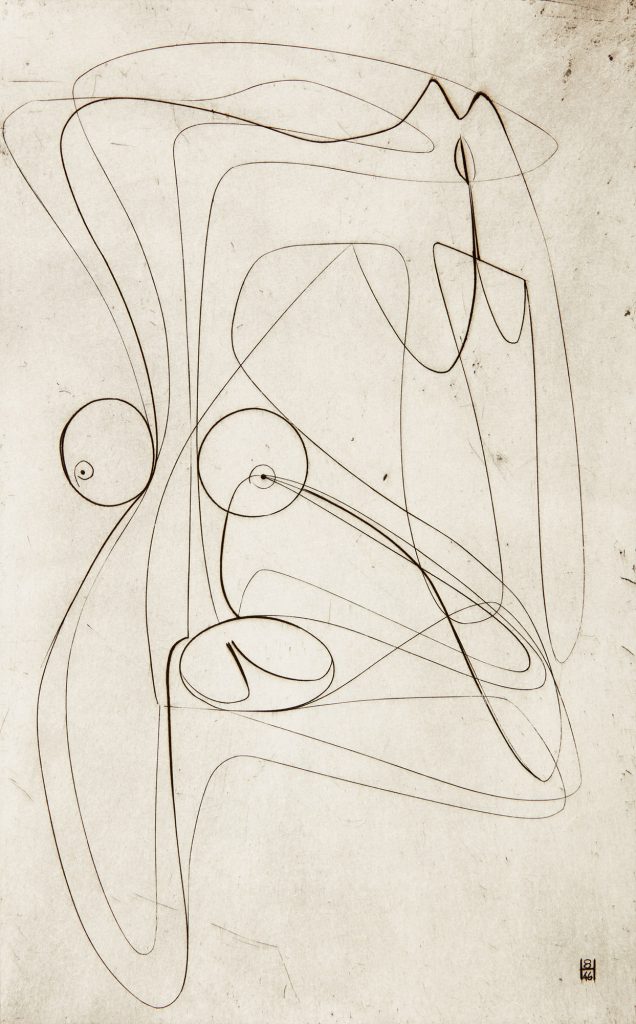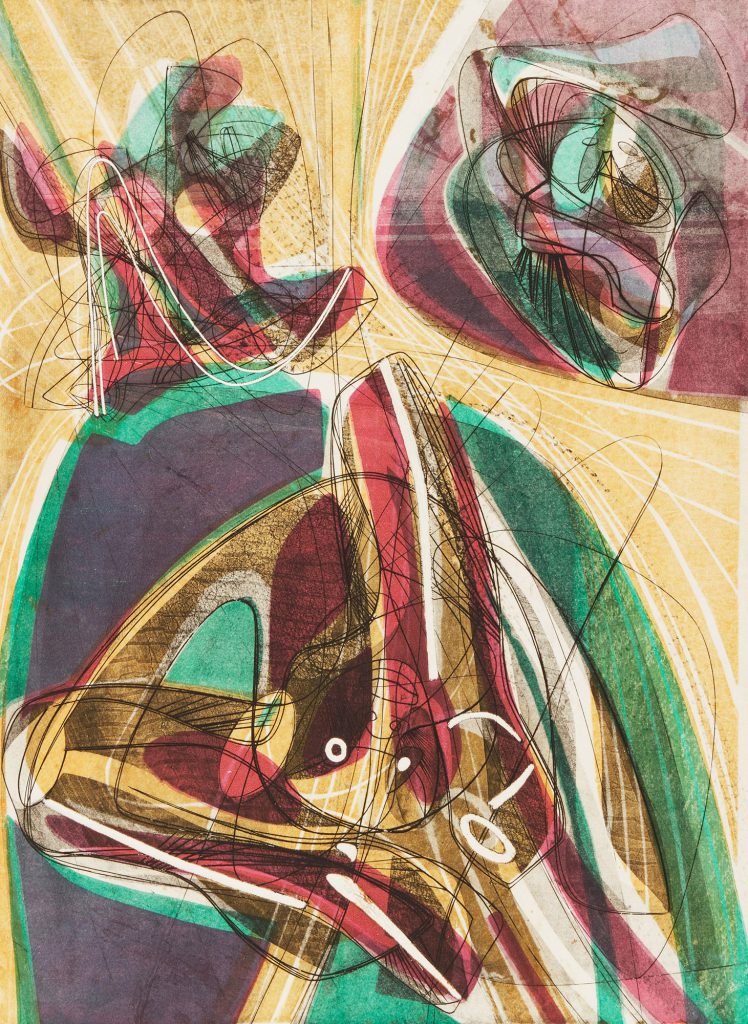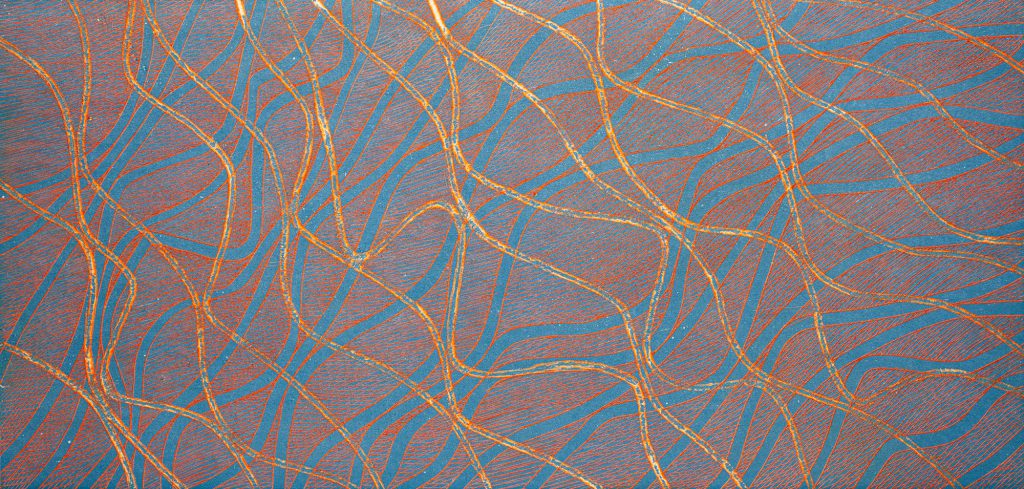We are excited to be offering three prints by master printmaker Stanley William Hayter (1901–1988) in our September Prints & Multiples online auction. Hayter studied chemistry and geology in England and worked for several years as a research scientist in the Middle East. He painted during his free time and, in 1926, moved to Paris to become a full-time artist. The following year he established Atelier 17, a printmaking workshop where artists such as Max Ernst, Joan Miró and Pablo Picasso could experiment with different techniques and media. In 1940, Hayter moved his studio to New York, where he would operate for nearly a decade before returning to France.
There, he attracted not only European painters and printmakers taking refuge from the war, particularly those affiliated with Surrealism, but also young American artists interested in the ideas these exiles brought with them. The exposure to the European artists and Hayter’s teaching had an enormous impact on American artists, many of whom were affiliated with the New York School, and greatly affected the future of printmaking in the United States. Jackson Pollock was influenced by Hayter in New York, particularly by his emphasis on automatism and reliance on the unconscious. The Atelier helped shape the early years of Abstract Expressionism and became one of the most influential graphic arts workshops of the twentieth century.
This beautiful etching Chas de l’aiguille has a controlled and sinuous arrangement of thin lines. The free-flowing lines appear to be spontaneously drawn, recalling the automatism that inspired Surrealism. The etching is nearly abstract, with female anatomical features emerging from the tangled lines. Chas de l’aiguille, which translates to “Eye of the needle,” is particularly remarkable and rare because it dates to 1946—making it one of Hayter’s earliest prints executed post-war while living in New York.
Day and Night is a beautiful colour aquatint with etching by Hayter dating to 1952. At this time, Hayter would have been back in France while keeping ties with his American students and contemporaries in New York as Abstract Expressionism was exploding on the art scene. This print, with very loose references to human features, shows the artist’s transition from Surrealism to Abstract Expressionism and from figuration to abstraction.
The third print by Hayter in this month’s auction is another colour aquatint with etching entitled Sealed Web. Entirely abstract with no reference to figuration and executed in a bright yet simplified colour palette of orange and blue, the work is a product of its time, dating to 1968. By this point, Abstract Expressionism had peaked and branched out into other abstract movements, including Color-Field painting, characterized by large areas of bright colours. The vibrations created by the layered web of lines also bear similarities to Op Art—a movement that emerged in the mid-1960s and focused on creating optical illusions for the viewer.




